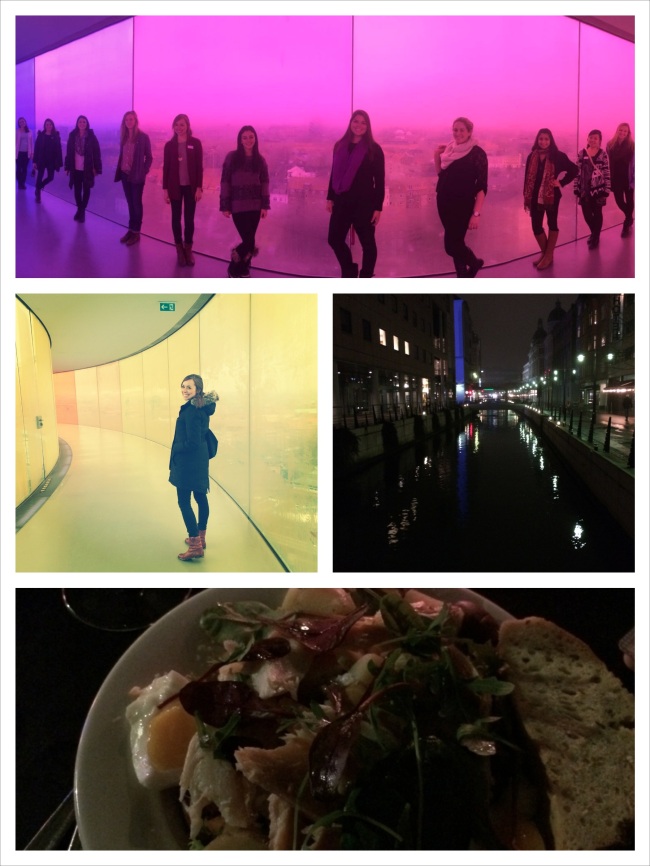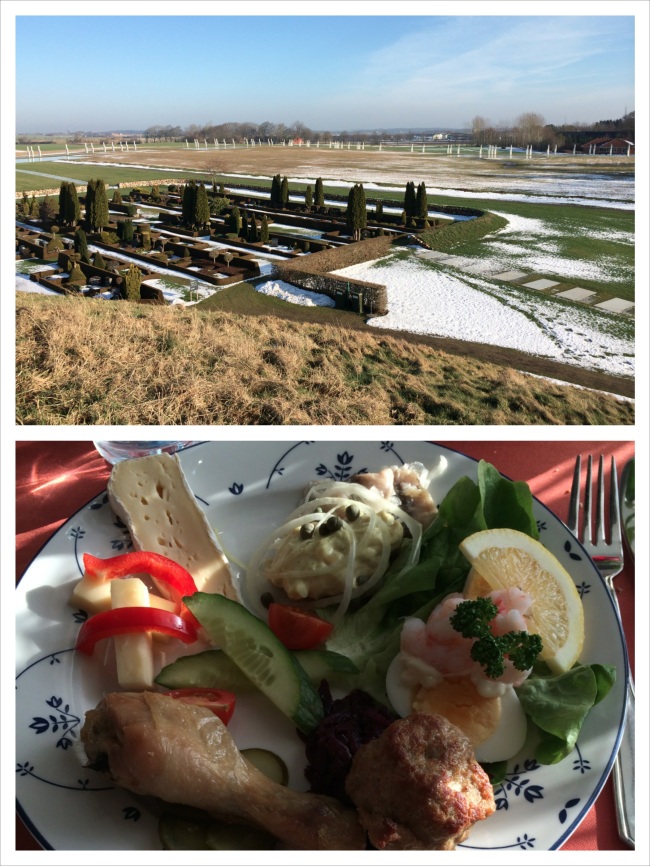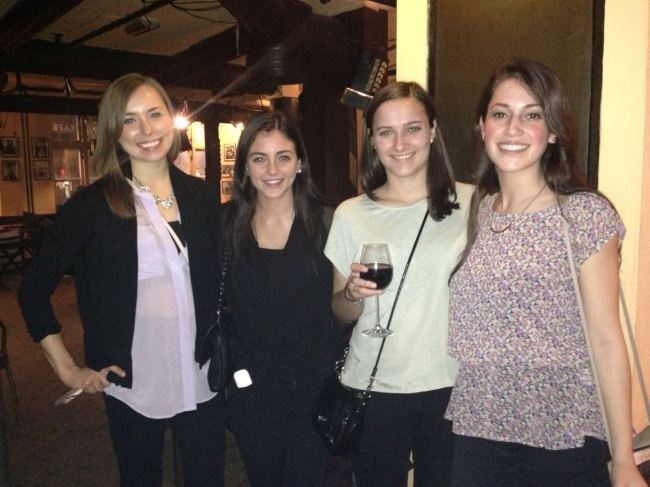This past week was Core Course Week at DIS. We didn’t have our normal classes and instead went on a short study tour for the first part of the week, followed by lectures pertaining to our core course during the second part of the week. Though it was tiring, it was really interesting. Reflecting on the week, I feel as though I have really learned a lot about the Danish healthcare system. I think that having a point of comparison has helped me to better understand the American healthcare system, as well.
Monday morning I arrived (rather groggy after the Ellie Goulding concert the night before) to Frue Plads square in Copenhagen to catch the bus to meet up with the rest of the students in my core course. I slept for the whole three hours we spent on the bus on the way to Western Denmark. Our first academic visit was to a general practitioner’s office, part of the “Kolding Sygehus” practice. He was a great speaker and his enthusiasm in his work was really obvious when he spoke. He explained the basics of the Danish healthcare system, focusing on the difference between general practitioners and specialists. I was amazed at everything a GP in Denmark is expected to know; they do everything from prenatal check-ups to minor surgeries right in the office. They are also responsible for determining when a patient should be referred to a specialist for more extensive treatment. He explained his role in his patients’ healthcare as “horizontal” because he follows patients and families throughout life. Though primary care in Denmark differs from the US in many ways, the issue of waiting times to see doctors and specialists did not seem to be as big of a problem as I previously expected: as I learned from the GP and a cardiovascular surgeon that we saw later on in the trip, there are guidelines in place that give patients the right to choose a different hospital or specialist for treatment if they cannot be seen within a certain timeframe.
The next day, we went to the Århus PET Center. It was an interesting visit because we got to see a lot of advanced technology that is used in neurological research that is done by the scientists there. They talked about the importance of integrating many disciplines when performing their research, a philosophy that I admired.
Our final visit was to the department of vascular surgery at Kolding Sygehus hospital. After hearing from a GP, it was interesting to hear from a specialist. I had the original impression that specialists in Denmark wouldn’t have good relationships with their patients because they only see patients when they are referred to them by a GP. The doctor we spoke to, however, really changed my opinions on this matter. He gave us the presentation that is given to new employees in their department. It explained how they strive to take the time to make patients feel comfortable and cared for. Again, his passion for his work was really inspiring and it was clear that money isn’t what drives him.
Overall, our visits during core course week taught me a lot about both the challenges and benefits of a healthcare system such as the one in place in Denmark today. It seems as though they may be lacking in the area of preventative care and screenings for certain diseases, although many of the doctors we spoke with believe that too many screenings cause patients unnecessary worry. Also, the amount of responsibility that is placed on GP’s is staggering; they are basically the gatekeepers to all specialists and are tasked with recognizing warning signs of so many diseases that it seems as though they are bound to miss things from time to time. Where the line falls between personal and public responsibility for one’s health is also a bit fuzzy since tax payers’ money all goes into the same pot for providing treatment for all citizens, whether or not they choose to live a healthy lifestyle. “Should I really have to pay for the lung cancer treatments of someone who smokes?” is one example of the type of questions the Danish healthcare system seems to be struggling with today.
Challenges aside, there are definitely benefits to the system. Healthcare in Denmark is founded on the principle of “free and equal access” which is definitely an admirable go for which to strive. In principle, this should eliminate, or at least significantly reduce, the health discrepancies that can exist when one can’t afford healthcare. The doctors we met also spoke very highly of their version of medical malpractice insurance. More than anything, though, what really struck me about all the medical professionals we met on the trip was their passion. As I said before, they really aren’t driven by money, but by their desire to provide great patient care and to form meaningful relationships with their patients. As the cardiac surgeon put it, “There are doctors in America making ten times the amount that I make, but why? I have everything I need.”
I don’t believe that we should (or could) adopt the Danish healthcare system in America because factors such as population size and economies differ so dramatically. I do, however, believe that something should be done to create access to healthcare for those who don’t have it because, for me, the thought of not being able to afford visits to the doctor or medications is terrifying and hard to imagine. Danish doctors clearly have prejudice when it comes to the American healthcare system, just as many Americans are wary of systems such as the one in place in Denmark. I asked one of the doctors we spoke with about what his suggestion would be to improve healthcare in American, given the fact that our societies are so different and the Danish system wouldn’t work the same way in the US as it does here. He said that it would take about 100 years, but it all starts with the first step (a rather vague answer, but I think he was referring to the Patient Protection and Affordable Care Act – aka Obamacare). Maybe, though, the very first step would be just changing the mindsets of those entering the medical field. I personally refuse to choose my speciality based on salary (I know that being a dermatologist would make for a great career, but I could never spend that many years of my life looking at zits and wrinkles). Being a doctor is definitely not an easy career, but the doctors we met on our study tour reminded me of the importance of remembering why I want to be a doctor in the first place. Maybe the first step to improving healthcare in America is for everyone to just take a step back and try to put themselves in others’ shoes. I think we often forget how easy it is to lose everything you have; for some people in America that can’t afford healthcare, it all began with a job loss during the recession that cause their situations to go downhill so quickly they couldn’t do anything to stop it. I’m glad that I’m not tasked with the responsibility of making the tough decisions when it comes to healthcare, but I think a little compassion goes a long way.
The tour wasn’t all focused on the serious healthcare debate, though – we also got to do a lot of sightseeing.
A museum & dinner in Århus…
Seeing the sights and enjoying a traditional Danish lunch in Jelling:
Aaand rounding out the week with friends at the MPP Social!
Core course week was definitely a great experience, if not a little tiring! Now that I’m officially caught up on blogs, I should probably go start my real homework…


